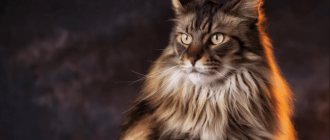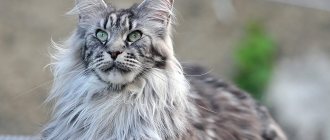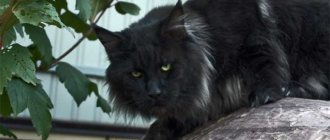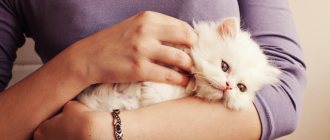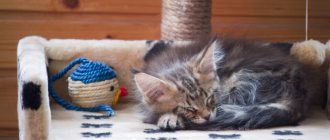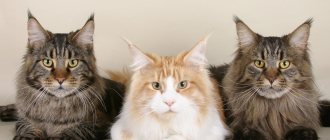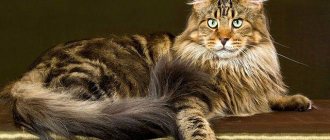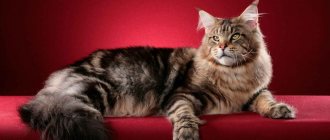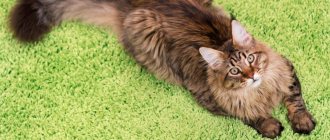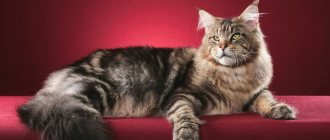11/11/2021 updated and new photos of kittens added (kittens page)
09.23.2021 updated and new photos of kittens (kittens page)
09.15.2021 updated and new photos of kittens (kittens page)
08/05/2021 updated and new photos of kittens added (kittens page)
07/01/2021 updated and new photos of kittens added (kittens page)
06/24/2021 updated and new photos of kittens added (kittens page)
06/11/2021 updated and new photos of kittens added (kittens page)
04/20/2021 updated and new photos of kittens added (kittens page)
10/21/2020 updated and new photos of kittens added (kittens page)
07/06/2020 updated and new photos of kittens added (kittens page)
05/21/2020 updated and new photos of kittens were added (kittens page)
03/05/2020 updated and new photos of kittens added (kittens page)
12/23/2019 updated and new photos of kittens were added (kittens page)
09.11.2019 new photos of kittens added (kittens page)
07/25/2019 new photos of kittens added (kittens page)
06/25/2019 new photos of kittens were added (kittens page)
05/14/2019 new photos of kittens were added (kittens page)
08/17/2018 new photos of kittens were added (kittens page)
07/18/2018 new photos of kittens were added (kittens page)
05/14/2018 new photos of kittens were added (kittens page)
Our graduate VOROTILA Afonya Coon*RU 4.5 months had a great time at the exhibition 04/07/08/18 “SELENA TIGER” WCF International Cat Chow 2x- EX1, CACP, nom.BIS, Best Maine Coon Kittens - BEST of BEST, General Best Kitten-3 Thank you Elena for the Love for our saffron milk cap!!!!
03/13/2018 new photos of kittens were added (kittens page)
02/05/2018 new photos of kittens were added (kittens page)
Son Uragan Afonya Coon*RU of SViNdoff became EUROPEAN CHAMPION
Maintenance and care
Despite the fact that this breed of cat tolerates harsh climates well, the owner of large animals will need to pay a lot of attention to them.
The main nuance of maintenance is Maine Coon fur care. Since there is quite a lot of it, in addition, it stands out due to its length, in order to prevent tangles, the cat will need to be combed regularly. A suitable comb is a blunt-toothed comb. It is recommended to perform such procedures every other day. Long-haired breeds are also recommended to be bathed with shampoo once every 6 months. The animal's claws require attention. As they grow, the ends should be trimmed, avoiding removing the living part where the capillaries are located.
As a kitten grows, its teeth change, but caring for the animal’s oral cavity is mandatory at any time. For these purposes, use a special toothpaste and brush.
Hygiene measures will also apply to the ears. The ears are subject to regular inspection; if various types of dirt are found in them, they are cleaned with a damp cotton sponge. You should avoid using sticks or matches with cotton wool. Cats' eyes should be wiped with a damp swab using boiled water.
Big cats themselves are noted for their cleanliness, so they constantly lick their fur. To help your pet get rid of hairballs in the stomach, specialized pastes are sold for animals that help cleanse themselves from the inside. Neglecting such remedies can lead to constipation and coughing in your cat. In addition, Maine Coon owners are recommended to grow a “cat garden” at home, which will help them cleanse the body on their own.
Cats at any age will be interested in entertainment, in addition to spending time in the arms of the owner. For these purposes, it is worth installing scratching posts, labyrinths and ladders at home, as well as shelves, beds and other interesting devices designed for active pet play. Otherwise, the Maine Coon will use curtains, cabinets and sofas as “sports equipment”.
For cat litter, you can purchase special litter or sand, but cleaning the litter box should be regular in light of the large size and smell of feces of both Maine Coon boys and girls.
The issue of cat nutrition should be approached thoroughly. It is best to individually select dry food for your Maine Coon together with a veterinarian or breeder. However, the animal will also actively and correctly develop on natural food. Super class food will already contain the necessary vitamins for a member of the cat family. When choosing a different type of feeding, your pet’s diet should include raw and boiled beef, chicken, and turkey. You should avoid fatty meats.
The animal should also be given lean fish, dairy and fermented milk products, and boiled eggs. It will be possible to replenish the supply of essential microelements by including sprouted grains in the diet. Vegetables and cheese can also be given to pets. Your Maine Coon will need clean, fresh water. To select the optimal portions of food, you can use a special sign that will indicate the weight of the kitten and its approximate menu.
The optimal age for mating is one and a half years. Maine Coons typically have 1 to 6 kittens per litter per year. Cats have very developed maternal instincts, so they show amazing care for newborns. If the breeder for some reason does not want to breed cats, then castration is carried out for males. It is best to castrate an animal before the age of one year. Cats are sterilized.
Traditional Maine Coon colors: photos and descriptions
There are several types of coat patterns called tabby.
They all have their own patterns. Tabby was inherited from the wild ancestors of modern domestic Maine Coons. Their distinctive feature is the letter “M”, which is visible in the area of the cat’s forehead and eyes with light or dark lines. There are three types of tabby:
- Tigers. The stripes on the body are parallel to each other.
- Spotted. There are spots of dark and light shades on the sides.
- Classic. Similar to the pattern of marble.
Often there are uniform colors in the same range; they are called solid or in the English version - solid (uniform). In this case, the tabby can be almost invisible. Often found in cats that are black in color. The darker the cat, the weaker the pattern of its coat appears. Tabby is especially pronounced in cats with fur of red (red) shades. Solids can be in the following palette:
- black;
- cream;
- red;
- smoky;
- blue.
Smoky gray and blue are of particular interest to Maine Coon breeders, as they are very rare for representatives of this breed. The gallery below shows photos of popular colors.
Maine Coon color calculator
To understand what color will result from crossing animals, breeders use a calculator table. With its help, you can predict with a very high probability what color the offspring of a thoroughbred couple will inherit.
How the coat colors of Maine Coon offspring interbreed.
This is, of course, not a guaranteed result, as it is impossible to calculate the exact genetic combination a kitten will inherit. From time to time, extremely interesting representatives of coons are born, having, for example, tortoiseshell tones, which is very rare for this breed. It has been noticed that most of these individuals are female.
Gray Maine Coon
Gray or blue colors are considered rare for this breed. An even color of blue shades is a rare occurrence. A smoky shade is usually found.
These cats look special; their color gives them their aristocratic charm. If a cat is exactly like this, it means that the gene responsible for the presence of a pattern on the body has been completely suppressed.
Blue tones are specially developed through selective breeding. This takes a lot of time and effort from breeders. The letter “A” is placed in the passport of such a kuna. If the cat has two-color fur, the code “03” is added to the letter designation.
Colors of Maine Coon cats with table, codes and pictures
The appearance of these domestic animals is closely related to the natural conditions of cold North America. In the article we will get acquainted with the colors of Maine Coons and take a detailed look at colors such as smoke, solid, tortoiseshell, white, red, marble and many others. No person who cares about animals can resist the beauty of these pets.
In our article about the description of the Maine Coon breed, we have already touched on the colors of these cats, today we will look at them in more detail.
Maine Coon coat colors
The most common wild colors are agouti, black merle and black tabby. In Russian nurseries, agouti with white and silver flowers are mainly present.
Raccoon cat color classes
The color of Maine Coons is distinguished depending on:
- coat color;
- the presence of patterns or their absence;
- the presence of various spots or their absence.
In order to make it easier to distinguish the appearance of a cat of different breeds, taking into account the color of its coat, as well as a number of other characteristics, about 20 years ago the fife Assembly created the first EMS code system. This system was gradually improved, and now it is considered traditional for judging cats in all felinological systems.
Maine Coons are designated by the first letters of the Latin name of the breed – MC (Maine Coon). Since their hair is considered semi-long, coons were included in the II category of purebred cats, and designated with the letters SLH - from the Latin language Semi Long Hair.
Regarding the fur of all mustachioed pets, felinological systems agreed that male cats can only be of two colors - red and black. Other colors are the result of lightening or oxidation of these primary colors. White wool is considered to be a lack of color. Felinologists have noticed that Maine Coon kittens born with a white coat have one or more dark spots on their heads, which subsequently disappear.
The designations used in EMS coding are the first letters of colors or even color genetics in various languages, mainly English and French. White shades and spots on Maine Coon fur, as well as various patterns, are usually designated with a special number.
Maine Coon color chart with codes
So, for example, a Maine Coon with black smoke coloring will be designated as ns. Next, the number of the drawing will be added, if there is one.
Most often in Maine Coons you can find such combinations as n 22, ds 22, d 22, n 23.
Rare and expensive Mei Coon colors
If we consider rare and expensive colors in a broader sense, then we can say with certainty that such colors do not exist. The most expensive and rare color can be considered any color of an animal, which is included in the standards of both American and European systems. But a rather rare occurrence could be, for example, the birth of a kitten that is completely the same color, despite the fact that its parents have fur with some kind of pattern.
Tabby
Various stripes on the coat of cats are combined into one name - tabby. In addition, tabbies are identified by expressive rims on the animals’ faces, which very often form the letter “M”. This color is called wild because it resembles real wild cats that live in forest areas.
Maine Coons can have different coat colors and one of three basic tabby patterns:
- Classic (Mackerel tabby);
- Spotted tabby;
- Brindle (Mackerel tabby).
The ticked tabby pattern is also quite common, but unfortunately, it is not recognized for Maine Coon cats. All other tabby patterns can be of any color recognized by the systems.
Classic (marble)
The classic tabby pattern, or marbled as it is also called, consists of wide curls and various continuous lines on the animal’s body.
Spotted
Spotted Tabby has intermittent stripes on the animal's fur that give the appearance of patterns of spots. The spot can be of any size and any degree of clarity.
Brindle (striped)
The brindle tabby is quite easily recognized due to the vertical stripes that run parallel. Maine Coons, which have brindle coat patterns, often resemble small tigers, which is not at all surprising, because domestic animals are genetically close to large predators.
ticked
In this case, there are no spots or stripes. Ticked coloring can be recognized by the characteristic pattern on the cat's face and agouti throughout the body.
If you look closely at each hair of a cat with a ticked tabby, you can see two smoothly transitioning colors. This hair color is called agouti.
Ticked coloring may occur in Maine Coons, but such a pattern has not yet been officially approved as part of the breed standard. Black and gold ticked patterns are often found in Abyssinian cats.
White marks
White spots on the Maine Coon's coat can be located on any color and be of completely different sizes, but they are always clearly visible, unlike Siamese cats, whose spots are shaded and do not have clear boundaries.
Color classification of Maine Coon with white spots
Smoky colors
The smoky color is considered a solid variety of silver tabby. The color is also called smoky if each coat of a Maine Coon is white at the base, but black or blue at the tip. Only a cat with distinctly white roots can be called smoky - gray roots are characteristic of monochromatic animals.
- Chinchilla - the predominant color on the coat is white, only the tips of the hairs are colored.
- Shaded smoke - only a quarter of the tip of the hair is colored.
- True smoke - the wool is half colored.
- Black smoke – black coat color and white roots.
- Blue smoke – blue coat color and white roots.
- Silver – light coat with white roots. You can distinguish such a cat from a white one by its eyes - in a silver cat they are always green.
- Cream (cameo) - kittens with this color are mostly born white, the topping becomes noticeable only over time.
Solid colors
The name “solid” was given to cats whose fur is completely the same color.
The monochromatic color is the result of the painstaking work of breeders, and it is quite difficult to find it. Often, upon careful examination of the cat, you will notice a subtle tabby pattern.
The Maine Coon is especially impressive because it is white in color with different or bright yellow eyes. Agree, the impressive size of the cat with white fur, which in addition makes him look fat, will not leave any fan of this breed indifferent.
The Maine Coon Solid black color is in no way inferior to white cats. Many lovers of this breed wait for many years to acquire such great happiness.
Tortoiseshell colors
The tortoiseshell color of the Maine Coon is associated with the history and origin of the breed. Since ancient times, these giant cats have had to adapt to survive in North America, where winters are often frosty and long. It was the tortoiseshell colors of the “fur coat” that served as a real salvation for cats, because with its help they could hide unnoticed in snowy thickets. The tortoiseshell color on the coat of Maine Coons remains quite popular to this day.
Disqualification
In recent years, Manx coon cats can be found in a wide variety of colors. However, in order to take part in exhibitions, your pet must meet certain standards of the American and European systems.
Unrecognized colors
Maine Coons of chocolate, gold, lilac, Siamese or any combination thereof are often not allowed to show.
There are also restrictions on the nature of coloring: colors and patterns that are found in Asian breeds are not recognized in raccoon cats. These include fawn, sorrel, cinnamon, point color, as well as any acromelanic colors. It is believed that oriental blood spoils the massive and powerful backbone of the Maine Coon. Ticked tabbies are also prohibited from showing.
The Maine Coon breed truly delights with its variety of colors. Don't forget to help your pet properly care for its coat so that it always looks truly regal!
Main characteristics
Tortoiseshell kittens appear quite rarely, as this is due to complex genetic processes occurring in the feline body. Typically, tortoiseshell color means mixing two, three or more colors on the fur of a cat. Speaking about the Maine Coon breed, we can safely note that in nature dozens of original combinations and variations of mixing colors on the fur of animals can be found, but, as a rule, spots of black and red shades can most often be found. You can also observe a “turtle on white”.
Let's look at the main types of tortoiseshell color.
Classical. The classic tortoiseshell color involves alternating orange (red) and brown shades on the animal's coat. If the parents of Maine Coons have very beautiful fur, and a chocolate shade predominates on it, then the kittens may also have a tortoiseshell color with chocolate and black spots.
Of course, these are just general ideas about the tortoiseshell colors of Maine Coons.
There may be other variations in the combination of shades and colors, but in general it is important to understand that tortoiseshell color implies the presence of spots of different sizes that smoothly blend into the fur of a cat or, in rare cases, a cat
Random color combination
For some reason, the color orange is traditionally considered in its pure form, but in reality it is rare. Most often, this shade appears in Maine Coons in white and red combinations, and forms combinations of various shapes and proportions:
- Tortoiseshell color - alternating red and black spots over the entire surface of the Maine Coon's coat. It consistently appears in female cats, while male cats get it in the only case - if they have an extra X chromosome and the entire sex formula looks not XY, but XXY. In this variant, Oo genes are added to these two XX and the coloring becomes tortoiseshell. Maine Coon males with this color are born sterile.
- Bicolor - a combination of white and red with a tabby pattern. The ideal color is a white chest, belly and paws on the inside. There may be a light, closed collar on the neck and a flame on the muzzle. The entire upper part of the Maine Coon (head, back, tail) should be covered with a basic red color. The genetic formula of red bicolors is written as aaOO/YD-Ss. The final gene designations Ss are responsible for white spotting.
- Tortoiseshell bicolors combine the first two points, but in fact already show three colors - white, black and red.
- A large group of cats with insignificant inclusions of white on the main red color is considered separately. The spots are classified as medallions, buttons, gloves, cap/saddle.
White-red (red) Maine Coons in any combination of colors look very elegant and even defiant. And if you add a powerful body, stern eyes and tufted ears to the portrait, you get an unusually beautiful large cat.
Origin story
Maine Coons boast a rich 150-year history. Much is known about the development and formation of the breed, but the appearance of such large cats in the north of America is shrouded in secrets and legends. One of them says that cats are the fruit of love between a cat and a raccoon. From the latter they inherited their large size and striped tail. According to another legend, Maine Coons have the blood of North American lynxes. As proof of this version, many cite the well-known tassels on the ears. However, the truth is that they are the result of selection; 100 years ago many representatives of the breed did not have these tassels, and even today not everyone has them. Realistic felinologists believe that, first of all, this is a population of domestic cats that formed naturally. Over the decades, these cats have been honed by nature itself, which has made them physically hardy and large animals, perfectly adapted to harsh winter conditions and hunting.
Since ancient times, “raccoon” cats lived on Maine farms and fought with numerous rodents, protecting grain supplies. But only the hardiest and largest individuals with well-developed muscles and gorgeous appearance took part in further targeted selection under human guidance. Maine Coons are rightfully considered the national pride of America. Since the mid-19th century they have already begun to be talked about as a separate breed. At one of the fairs, farmers even organized an exhibition where Men's raccoon cats competed for the title of Meime State Champion coon cat. Undoubtedly, this speaks of their high popularity and love of the local population. Further, large cities also became interested in cats from Mena. They began to appear at exhibitions in Boston and New York, where they competed with another popular breed at that time - the Angora cat.
In 1895, at the Madison Square Garden New York cat show, the beautiful Maine Coon Kuzi became a star and received the title Best of Show. It was a brown tabby cat (initially only those could belong to the breed, but later the palette expanded significantly). In 1908, at an exhibition organized by the CFA in Boston, the fifth Maine Coon was registered, his name was Molly Bond. Over the next 10 years, the popularity of the breed grew exponentially, they began to be exported to other countries and actively improved their external characteristics. However, since 1911 there has been a lull. For 40 years, Maine Coons have not appeared at any specialized exhibition. Apparently, this was due to the emergence of other, more interesting breeds.
Thanks to the enthusiasm of raccoon cat lovers from 1966 to 1968, a breakthrough was made and the champion title was returned to the giant. In 1968 there were six, which is still in operation today. In 1976, the Maine Coon breed was officially recognized, and by 1980 about 200 nurseries and thousands of fanciers were registered. There were certain standards and Maine Coons began their triumphal march around the world, winning the hearts of millions with their incredible appearance and peaceful nature.
Video review about Maine Coon cats:
Unrecognized colors
Recently, so-called ticked colors have begun to appear. This is unacceptable among this breed. The essence of the color is that one hair has different shades of the same color and, as a result, does not form any pattern.
Siamese colors, chocolate, cinnamon, gold, lilac in its pure form or as an additional color are also unrecognized. There are also types of pattern arrangement that do not correspond to the breed. Animals with such parameters are disqualified and are not allowed to exhibit.
Varieties
Today there are two main types of animals of this breed:
- American type (aboriginal);
- European.
The second type was formed much later, after the active spread of animals around the world, when individuals found themselves in slightly changed living conditions, climate conditions, etc. Sometimes it is quite difficult to classify cats as a specific type, but for each of them there are certain external characteristics.
An American Maine Coon will have a longer muzzle and a low forehead, while a European will have a high forehead. It is the second type that is characterized by slightly slanted eyes, while in an aborigine they will be round. In addition, the European type will have slightly shorter fur.
Animals are also classified by breeders based on their color. This breed has only two genetic colors - black and red.
Patterns and patterns on animal fur are formed due to the distribution of pigment on the skin, which is reflected and transferred to the hair follicles. The genetic characteristics of the offspring regarding color may vary.
There is a certain classification of Maine Coon color, which is prescribed in the pedigree of the animal.
Stripes, spots and patterns are called tabbies, and there can be several of them:
- brindle - characterized by alternating parallel light and dark stripes;
- spotted - stripes turn into bright spots on the sides;
- classic - pattern with wavy stripes;
- ticked - the pattern is concentrated on the muzzle; there are stripes of different shades on the body.
Maine Coons also have solids. This type of fur has a pattern, but of a rather blurry nature. Single-color solids appeared thanks to artificial selection. Cats can be of the following tones:
- smoky;
- blue;
- black;
- white;
- red;
- cream.
Maine Coons of smoke color will have an uneven color with a certain play of shades. In this case, there are several variations in the color of the fur coat depending on the color of the pile.
White spots can decorate the coat of cats, and the color is divided into the following types:
- gloves;
- the tuxedo;
- van;
- bicolor;
- harlequin;
- white buttons;
- medallion.
Multi-colored animals are also found; they are characterized by a random arrangement of spots and inclusions.
Types of red colors
The formation of the color of Maine Coons and other cat breeds is influenced by only two pigments - eumelanin (black) and pheomelanin (red). There is also a third large group - white cats - but in this case the genetic instructions do not allow the pigments to color the fur.
The mechanism of inheritance of red color itself differs significantly from other gene scenarios:
- the red color depends on the sex of the animal - there are always more red boys born than girls;
- Ginger cats always have a tabby pattern on their fur - stripes or spots.
An interesting article – “On the red color of cats.”
In more detail this structure looks like this:
- The O (orange) gene is responsible for the red color. In the dominant form it produces red wool, and in the recessive form (o) it produces black wool.
- O is attached only to the X chromosome, which is responsible for the sex of the future kitten. The formula XX characterizes cats, and XY - cats.
- Thus, a cat can have three combinations of the orange gene: OO (red), OO (non-red) and OO (tortoiseshell). The latter refers to two-tone colors and will be discussed below.
- Boys, due to one X chromosome, can only get two combinations - O or o. They will either be red or not red. That is, there are no Maine Coon cats with a tortoiseshell color.
- Males always take the color gene from their mother. In the litter of a ginger cat that was bred to a black (blue, white, black) cat, the boys will only be red. But in cats, the colors in this case are more varied - tortoiseshell or mixed, like the father and mother.
- The final feature of the O gene is that red Maine Coons always have a tabby pattern on their coat. Cats do not have a pure red color in nature.
Two genes are responsible for “wild” striping: A and T:
- Gene A (agouti) in a dominant form opens the way for gene T, which colors the coat. In the recessive state of aa (not agouti), the pattern should not appear. But due to the addition of O to the only chromosome (X), this rule does not work in red cats. They are always striped.
- Gene T (tabby) is already a definition of the properties of the pattern. It can be brindle, leopard (dots), marbled (broad lines) or Abyssinian (ripples). Maine Coons are more likely to exhibit brindle coloring than others, although some catteries specialize in breeding cats with arbitrary combinations of coat shades.
The final genetic instruction that affects the red color in Maine Coons is carried by the D gene. It is responsible for lightening the color tone when it takes on the recessive form of the dd allele: black becomes blue, chocolate becomes lilac, cinnamon becomes sandy fawn, and red becomes in peach (cream).
That's all you need to know about the genetic nature and types of red color in Maine Coons.
Detailed article – “Colors of Maine Coons”.
Maine Coon care
Typically, such cats are fully formed by the age of 4-5 years. Their mobility allows you to diversify your time with young animals. First of all, you should worry about the comfort of your pet in a confined space.
It is necessary to consider a device for sharpening claws and a rest area.
The red Maine Coon has a soft coat that is very easy to comb. This can be done once a week. Don't forget about the animal's magnificent tail. Hygiene plays a huge role in caring for this cat. Cleaning the ears, taking care of the claws and regular bathing will make your pet's life much more enjoyable and longer.
What to feed?
First, select the necessary utensils for food and water. It must be very heavy so that it cannot be turned over. The main diet must include meat and dairy products, as well as vegetables and grains. The food can be combined with dry food only of the highest quality.
You cannot add spices to food, especially salt and sugar. For proper digestion, the Maine Coon needs greens. Avoid street grass. An alternative would be home-sown grass. Do not forget about anthelmintic drugs for preventive purposes.
Beautiful raccoons drink only purified water. Based on this, try to place the bowl of water away from the food to avoid pieces of food getting into the liquid and vice versa.
In general, Maine Coons are not picky eaters. The main thing is not to allow yourself to eat unhealthy, or too cold or hot food.
Character and habits of the breed
These remarkable giants may seem harsh at first glance. However, according to the owners, their character is simply excellent - they get along well with all family members and other pets. Often, Maine Coons are rarely aggressive, however, they strictly distinguish between friend and foe. These large cats are curious and at the same time calm. Most of all, Maine Coons love to take a sweet nap inside the house or in the fresh air. But the four-legged strong guy is unlikely to refuse an offer to play.
Some interesting facts about the Maine Coon:
- Most owners note that cats of this breed have a very high level of intelligence. Animals perfectly distinguish between the degrees of what is permitted. They can rarely be caught stealing food from the table or damaging furniture. Respectable Maine Coons are unlikely to descend to a banal, heart-rending cat cry. Most often, their behavior corresponds to their appearance - just as imposing, calm and sedate. Maine Coons usually take into account the mood of their owners and detect shades of intonation addressed to them.
- The Maine Coon cat, unlike its relatives, is not afraid of water and is always happy to dip its paw into a filled bath, and sometimes even splash around in it. Thus, it would be useful to leave them a small bowl for water procedures when leaving the house.
- Maine Coons can communicate not only by meowing. Surprisingly, these animals can make sounds similar to squeaks, trills and even chirps. In addition, they have remarkably developed body language, and the bump of their large head can sometimes signify a particularly affectionate and caring attitude from the pet.
- Maine Coons are usually unpretentious and do not require any specific climatic conditions. In general, they can live perfectly well on the street, but it is better not to separate them from their loving family. The charming giant can easily survive even winter outside. However, you should not leave your pet unattended outside the house - the magnificent creatures can become easy prey for other potential owners who are not very clean at hand.
Character of the breed
The Maine Coon's personality is responsible for the breed's current rise in popularity. Animals of this breed provide excellent company to the owner, without being too annoying, and although he can be “talkative”.
Behavior is sometimes more canine than feline due to the need for companionship and affection. They tend to be attached to people, but they are also happy to spend time alone, sleeping or exploring the surrounding area.
Your cat can be left at home for a standard 8 hour workday, just make sure she has food, water, a place to stretch her legs, scratch her nails and take a safe nap.
Maine Coons are affectionate cats that love attention. For example, sit on the owner’s lap, play with him, but they will be happy just being in close proximity
To a large extent, these cats are tolerant of the attention of children, which makes them an excellent assistant for parents, but you still need to be careful as the cat is large.
Color coding
The unified international EMS system allows you to figure out what color a Maine Coon is, according to which each color is assigned an individual code. Let's look at this in table form. In such a system, Maine Coons are supposed to have the following types of colors:
| N | black |
| A | blue (the result of oxidation of the black tint) |
| E | cream (ginger) |
| D | red |
| F | turtle (mostly females) |
| G | blue cream (the result of oxidation of tortoiseshell color) |
| S | smoky, silver |
| W | white |
If there are white spots on the skin, a digital code is added to the indicated letter code:
- if the animal is white with one or more spots of the primary color, then it is “honored” of the classification “van” - 01;
- if 2/3 of the individual is white, then it is a “harlequin” - 02;
- a two-color pet or bicolor is 03;
- with white (if it is less than half) – 04.
The presence and type of coat pattern allows us to distinguish the following types of raccoon cats:
- classic tabby or marbled (the animal has a pattern in the form of the letter “M” on the forehead or “butterflies” on the sides) – code 22;
- mackerel or tiger tabby (it can be recognized by the already mentioned letter “M” on the forehead, in addition, the animal has stripes similar to the color of a tiger’s skin throughout the body) – 23;
- spotted (so-called torn brindle or spotted) - 24;
- shaded (the manifestation of the tabby color on the silver coat, which makes it look blurry) -11;
- chinchilla – black series of colors, cameo – red series -12;
- agouti factor (it is obvious from the color that the individual is a tabby, but the pattern is difficult to attribute to a specific type) – 21.
Sometimes when describing an individual, characteristics of eye color can also be used. When accounting for it, special codes are also used:
- blue-eyed Maine Coons are coded as 61;
- cats with yellow, orange or golden eyes are code 62;
- in case of disagreement, indicate code 63;
- Green-eyed people have a code of 64.
You can learn about the colors of Maine Coons by watching the video.
Description
White color has always been a symbol of purity and innocence, causing special awe, so a white graceful cat cannot leave anyone indifferent. Snow-white blue-eyed Maine Coons are a rare phenomenon in nature. They have their own characteristics of care and maintenance, but in general they are similar to all other representatives of this breed.
The homeland of Maine Coons is distant Northeast America, more precisely, the Isle of Man, with a rather harsh climate. Only hardy and strong animals could survive in unfavorable conditions here, among which were these wonderful cats. Nature has endowed them with everything they need to withstand bad weather.
The animal has strong, long and wide paws, so as not to fall into snowdrifts, and a powerful, elongated body. A luxurious soft and warm undercoat saves them from piercing winds and severe frosts. The cat covers itself with its large fluffy tail like a blanket.
The weight of an adult animal can reach more than 10 kg, and the body length of Maine Coons is simply amazing. The longest cat in the world is a representative of this breed, reaching 132 cm from the tip of its nose to the tailbone. The animal's neck is short and massive, with a fluffy collar. Maine Coon wool is waterproof. Cats are excellent swimmers and are not afraid of water.
Does a cat change color during its life?
Spitz: red, brown, cream, gray, sable and other colors
Only white kittens are born with spots on their faces and faint stripes on their sides. After a month or two they disappear, the cat becomes completely white. Conversely, a snow-white kitten may over time become creamy, slightly hazy. In other cases, cats do not change color throughout their lives. The drawing will become more expressive and clearer, and the color will not change throughout your life.
Maine Coons are an interesting breed of large, strong animals. Regal and majestic, they are big homebodies, affectionate and smart pets. The fur is long, fluffy and soft with a variety of colors. It is classified and designated with a specific code. Animals are valuable. They are bred in nurseries and the cost is relatively high.
*Prices are as of August, 2021.
Maine Coon health and life expectancy
Maine Coons can “boast” not only of their outstanding size, but also of good health. They practically do not get sick, since they have good immunity from birth. A Maine Coon cat can live 15–20 years.
To rule out urolithiasis, you need to take your pet to the veterinarian once every six months. To prevent this problem, the Maine Coon must eat properly and receive the necessary care.
Proper nutrition and proper care of the animal will help prevent the onset of urolithiasis, which is typical for Maine Coons.
The animal may have joint problems. However, a kitten leaves the nursery for a new family usually at the age of 12 weeks. At this time, joint pathologies are immediately visible. To avoid problems with the health of the animal, it is better to take it from those breeders whose reputation is impeccable.
A Maine Coon has been living in my friend's family for 3 years. During this time, the cat has not had any illnesses, he is cheerful, cheerful and eats well.
What colors are considered the most expensive and respectable?
The fashion for the color of cats changes over the years. Either red marble soars in price, or Harlequin. Colors can be truly rare and original. But the value of animals is not in them, but in their health and breed characteristics.
A cat is a friend, a family member. It doesn't matter what his fur is. They choose a friend with their hearts and for a long time, and the colors are all good in their own way.
Cheaply choose and acquire a friend in the Lakiss nursery, Novosibirsk. For example, a black marble male kitten costs 5,000 rubles.*
Kittens are delivered to any city in Russia and abroad by the AKBARS nursery in the city of Ufa. They are purebred with passports and pedigree. The average price is 15 thousand rubles.
Features of the character and care of animals
Maine Coons are very observant animals, as scientists have proven, they can do conscious actions. Not many felines can raise their offspring together, but a cat and a Maine Coon cat do it together. These cats have an excellent memory, which allows them to remember several commands from their owner.
Cats will get along well with other animals and children, as they love to be held. It takes time for a pet to get used to a new person, so cats treat guests with caution. Maine Coons are very loyal animals, this devotion is comparable to that of a dog, and they are also easy to train. These are very energetic pets, they need to move a lot, there must be enough space for this.
Since Maine Coons have very long and thick fur, it requires careful and constant care. To prevent the fur from getting tangled, it should be combed; for this, special combs with rounded teeth are used, this is necessary so as not to injure the delicate skin of the animal. Cats love to wash themselves and are neutral to water, so they can be washed easily
The ears of these animals are a weak point, they should be given special attention, they need to be cleaned with a soft cloth, the inner surface of the shells should have a pink tint
Maine Coons love high places, so their personal space should be high. Owners who live on the upper floors should be careful about open windows in the rooms. Since Maine Coons are large, they cannot group themselves correctly when falling, which is why accidents happen to animals.
Animals love meat, so they must have it in their diet, but you shouldn’t chop it finely; chewing food will strengthen the cats’ jaws. The diet should not contain fish, milk, and cats should not be given pork or lamb. Kittens of this breed are born quite large in size, they are very playful and active, they are almost always busy, and when they find themselves in an unfamiliar place, they will completely explore the room. You can buy Maine Coon kittens at the age of 12 weeks and above.
You can buy kittens in a specialized nursery, the price for them is not small. Here everything will depend on the color, gender and age of the animal, and it is also worth considering why the pet will be acquired. If the animal will not be shown at exhibitions, and there are slight deviations from certain standards, then their price starts from 20,000 rubles. Of course, on the Internet there are a lot of advertisements for the sale of these kittens at a lower price, but they are usually not purebred. And it is worth remembering that the natural colors of Maine Coons will always cost much more.
You will learn more about marbled Maine Coons in the following video.
Color options
If we talk about haze, they have an uneven color.
Most often, the roots of their hair are completely white or lighter from the top. The light tone is especially visible when the cats are moving. Smoky kittens are very beautiful, but adult animals attract the eye and seem more mysterious. Those people who specialize in cat breeds divide smoky cats into several subspecies, distinguishing them by the degree of coloring. If we talk about standards, then smoky cats can include animals of any color. For example, you can find black smoke, and gray, and red, and tortoiseshell. In addition, lighter hazes are allowed, for example, blue or cream. The dominant gene Dilutor is responsible for pigmentation. And therefore, light-colored animals in the future will have a lighter base shade.
Depending on the degree of color, smoky Maine Coons can be divided into the following categories.
- Shaded cats have only ¼ of their hair colored.
- Chinchillas have 1/8 of their hair dyed.
- Smoky cats are cats whose fur is half colored.
- Black smoke. These cats are almost completely black. Only the roots of the wool are white.
- Blue smoke cats are blue in color, but the roots are completely white.
- Silver cats are born almost white. However, over time, the fur becomes silver. Their distinctive feature is their emerald eyes.
- Red smoke. Animals are born almost white, but over time they develop a red haze.
Origin story
The northwestern United States is considered the birthplace of this breed. It was there, in Maine, that these incredible creatures first saw the light of day. In confirmation of this origin, the breed even received the name Maine Coon. Despite the logic of this fact, many build their own theories about creating pets.
Some consider the unusual creatures to be a combination of the genes of cats and raccoons. This theory is supported by the Maine Coon's tail color. Others replace raccoon with lynx in this DNA cocktail. The reason for this hypothesis is the tassels on the ears of these cats.
Most experts are still inclined to believe that animals appeared as a result of evolution.
Maine Coon appearance
The external characteristics of these animals are varied. Their color can be dark and even red, but some distinctive features still remain unchanged. There are 2 types of Maine Coons - American and European. American cats have a rustic head shape, wide bones, and stockiness. European animals are distinguished by longer tails (the length exceeds the size of the elongated hind legs of a cat), elongated body and wild look.
Structure
Maine Coons are unusually hardy and strong. This can be said by its characteristic appearance. The weight of an adult cat is 4.5–13 kg, and the Maine Coon reaches one meter in length.
Head
The cat has a square muzzle with high cheekbones. Its width and length usually go well with the size of the body and head. Seals are famous for their strong chin, which shows a 90-degree angle in profile. The profile is soft, without stops or humps.
The animal's ears are large, set high and wide, pointed at the tips, and have tufts. Maine Coons have large eyes, slightly slanted and wide-set, slightly protruding.
